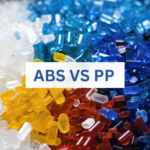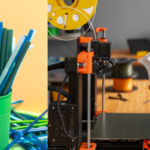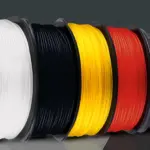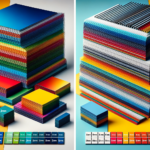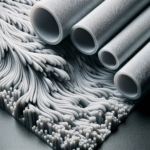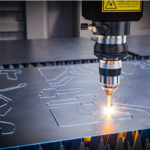When it comes to choosing between Plexiglass and glass for your project, several factors need to be considered. Both materials have their own unique qualities, and understanding these differences will definitely help you to make an informed decision.
As a matter of fact, the refractive index of plexiglass is approximately 1.49, while the refractive index of standard glass is around 1.5. This means that both materials have very similar optical properties, which is one reason why plexiglass is often used as a substitute for glass in applications where transparency and clarity are important.
Let’s dive into the blog post to uncover valuable insights for the right material for your project!
Table of Contents
Composition and Properties of Plexiglass and Glass
Plexiglass, also known as acrylic glass, is a synthetic polymer made from polymethyl methacrylate (PMMA). It is known for its high transparency and is often used as a shatter-resistant alternative to glass.
Traditional glass is primarily composed of silica, soda ash, and lime. It is a natural material that has been used for centuries in various applications, from windows to decorative items.
Plexiglass vs. Glass: The Actual Comparison
When it comes to a thorough comparison between Plexiglass vs Glass, it’s essential to delve into various aspects that matter most to your project. Both materials, clear acrylic (commonly referred to as Plexiglass) and traditional glass, have their unique characteristics and advantages. Factors such as scratch-resistant components, UV light protection, the presence of coatings, and the use of polycarbonate sheets alongside acrylic and glass are some factors that help us make an informed decision.
Let’s delve into some critical elements to see which material comes out on top for your specific application.
Clarity and Transparency
One of the most significant differences between Plexiglass and glass is their clarity and transparency. Acrylic sheets i.e. Plexiglass, boast exceptional clarity, almost rivalling that of glass. It allows more than 90% of light to pass through, making it an excellent choice for applications where visibility is key. Glass, on the other hand, offers unparalleled clarity. It is renowned for its ability to transmit light without distortion. However, it may have a slight greenish tint, especially in thicker pieces, creating unwanted glare at times.
Durability and Strength
Plexiglass is significantly more impact-resistant than glass. It is less likely to shatter upon impact, making it a safer choice in environments where breakage is a concern. Glass, while fragile, is harder and more scratch-resistant than Plexiglass. However, it is prone to shattering, posing safety risks.
Weight
Plexiglass is considerably lighter than glass of the same thickness. This makes it easier to handle and transport, especially in larger sheets. Glass, being denser, is heavier and can be more challenging to work with, requiring sturdier framing and support.
Cost Comparison
Did you know that plexiglass can cost half of what glass does? This is a cost-effective solution for projects with budget constraints is one of its key advantages. Glass tends to cost more expensive, especially if it’s custom-designed or of high quality, it is considerably more expensive.
Installation and Maintenance
Installing Plexiglass sheets is relatively straightforward. It can be cut and drilled with standard tools, making it suitable for DIY projects. Maintenance typically involves cleaning with a mild detergent and a soft cloth. Glass installation may require professional expertise, especially for large or intricate designs. Maintenance can be more labour-intensive, as glass is prone to smudges and streaks.
Applications
Plexiglass is versatile and finds applications in various industries, including signage, protective barriers, and even aircraft windows. Its shatter-resistant properties make it ideal for safety-critical environments. Glass is a timeless choice for architectural features, windows, mirrors, and decorative pieces. Its unparalleled clarity and aesthetic appeal are well-suited for premium projects.
Environmental Impact
Plexiglass production has a lower carbon footprint compared to glass manufacturing. It is also recyclable, making it a more eco-friendly option. Glass production, while energy-intensive, can be sustainable when recycled glass is used. However, it may not always be as environmentally friendly as Plexiglass.
Customisation Options
Plexiglass offers a wide range of customisation options, including different colours, thicknesses, and finishes. It can be easily moulded to suit various design requirements. Glass window customisation is possible but may be limited compared to Plexiglass. Custom glass often comes at a premium price.
Safety Considerations
Plexiglass is easily recycled, making it an environmentally friendly choice. When it comes to maintenance, plexiglass surfaces are more resistant to shattering compared to glass. So, whether you’re looking for cost savings or sustainability, plexiglass offers a compelling alternative to traditional glass. Glass, when broken, can produce sharp shards, which can pose a safety risk. Tempered or laminated glass can mitigate this risk to some extent.
Aesthetics and Design
The choice between Glass and Plexiglass often comes down to aesthetics and design preferences. Plexiglass can have a modern, sleek appearance, while glass exudes a classic elegance.
Is an acrylic sheet stronger than glass?
When considering this question, it’s crucial to factor in the unique properties of acrylic plastic material derived from petroleum. While Plexiglass may not be as hard as glass, it still has remarkable advantages that make it ideal for use in various applications. Whether it’s for protective barriers, signage, or vehicle windows, the scratch-resistant qualities of acrylic sheets like Plexiglass make them a superior choice.
One of the main advantages of acrylic over glass is that Plexiglass strikes a balance between durability and resilience, offering a practical solution for applications that require both scratch resistance and impact resistance.
Is an acrylic sheet better than glass?
Glass or plexiglass, each material has its strengths, and the choice between Plexiglass and glass should be based on factors such as clarity, durability, and safety considerations. The different types of acrylic available, such as cast and extruded acrylic, each comes with its own set of characteristics. Acrylic sheets can be a suitable alternative to using glass in certain applications due to their lightweight nature, impact resistance, and clarity.
For decorative purposes like glass and mirror installations, you can also use acrylic, a material that provides a similar look to glass but with added benefits such as lighter weight and reduced risk of breakage.
The decision to use acrylic, plexiglass, tempered glass, or traditional glass ultimately depends on your specific needs and preferences.
Right Material for Your Project!
To conclude, you can use plexiglass for its versatility and ease of handling. Whether you need to cut plexiglass to specific dimensions or create a custom display, plexiglass for your project offers a flexible solution. Any shape plastics provide you with custom plastic cutting capabilities based in Sydney. Alternatively, if you’re looking for extra durability and safety, tempered glass could be the preferred choice.
Whether you need plastics in any shape, our services include Custom Plastic Fabrication, Cut To Size, Digital Printing, and Laser Cutting, offering a wide range of materials like acrylic and polycarbonate for your custom plastic fabrication needs.
For personalised plastic solutions, Reach Out to us today. Let’s bring your vision to life!
